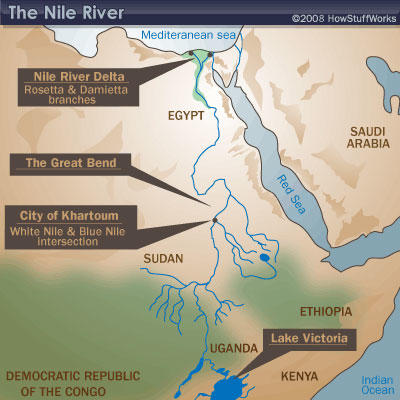Introduction
The Nile River has for a long time been the source of political wrangles. The river is the longest in the world, measuring about 6700 kilometers. The river flows through ten countries namely: Kenya, Rwanda, Burundi, Eritrea, Sudan, DRC, Tanzania, Uganda, Egypt, and Ethiopia. About 123 million people depend on the river for survival. About 83% of Nile River’s water originates from Ethiopia and Eritrea, Sudan and Egypt uses approximately 90% of the water. In the past few decades, tension has continued to intensify three nations (Egypt, Sudan, and Ethiopia) that share its waters. The international community attributes the wrangles to concerns on ecosystem degradation, high levels of poverty, water problems, population increase, and political interests.
Egypt’s Dominance
In the past, the tension arose from such reasons threats of military rule in Egypt, the unending wars in Sudan, and minimal use of the resource by the other seven countries. As of recent times, the tensions still thrive in the region because of Egypt’s dominance over the water and some treaties the country holds purporting to control the river. The 1929 and 1959 Nile Water agreements are at the core of the tensions (Degefu 130-133). It is through these agreements that Egypt swore to protect the waters from interruption by any issues in the other basin states. The agreements also put an end to any constructions near or along its tributaries as it would interrupt the flow to Sudan and Egypt. The agreements are under scrutiny by the other Basin countries that claim their rights to the water (Allan 218-219).
Use of the Water by Ethiopia for Developments
The river’s water is essential for the survival of the states’ population. They require sufficient water supply for them to produce food, and feed their animals among other needs. The availability of the river’s water is paramount to their social and economic well-being. Ethiopia, for example, requires the water to support its industries and hydro-electric power stations. On the other hand, Egypt is jealous over Ethiopians use of the water and reinstates its intentions of protecting the river from exploitation. The state has made its intentions well-known that it is ready to use military force to control the river. As a response to Egypt, Ethiopia claims it is using its rights of exploiting her natural resources. The country has gone further to the extent of renouncing the old colonial treaties (Degefu 214).
Sudan and its Irrigation Projects
In matters concerning the river and Sudan, the state needs the waters mainly for its economic development. Sudan needs the water for its irrigation activities and hydroelectric power. The irrigation projects carried out in the country supports the population by providing food and exporting the surplus (Hopkins 723). The state also needs to protect her people who live on riverbanks from the annual rain floods that come from the Ethiopian highlands. In Egypt’s view, the people living on its banks violate the alleged treaties. It believes it has natural rights and powers bestowed on it to oversee the river. Additionally, Ethiopia’s construction of the Renaissance Dam on the Blue Nile angered Egypt and violence was almost about to erupt, but they solved their disagreements amicably (Anderson 64-65).
Conclusion
Despite the disagreements, there have never been violent conflicts among the nations arising from river’s rivalry. Furthermore, the Nile basin states are seeking for ways to solve the problems and have all them satisfied. The international community has also been of help as it helps the countries dialogue if problems arise. For the benefit of all, the states must keep constant communication for their benefit, manage, and sustain the water source and still have their relations intact.
Map

Works Cited
Allan, J. A. The Middle East Water Question: Hydropolitics and the Global Economy. London: I.B. Tauris, 2000. Print.
Anderson, Ewan W. An Atlas of Middle Eastern Affairs. London: Routledge, 2010. Print.
Degefu, Gebre Tsadik. The Nile: Historical, Legal, and Developmental Perspectives: A Warning for the Twenty-first Century. Victoria, B.C.: Trafford, 2003. Print.
Hopkins, Peter Gwynvay. The Kenana Handbook of Sudan. London: Kegan Paul, 2014. Print.